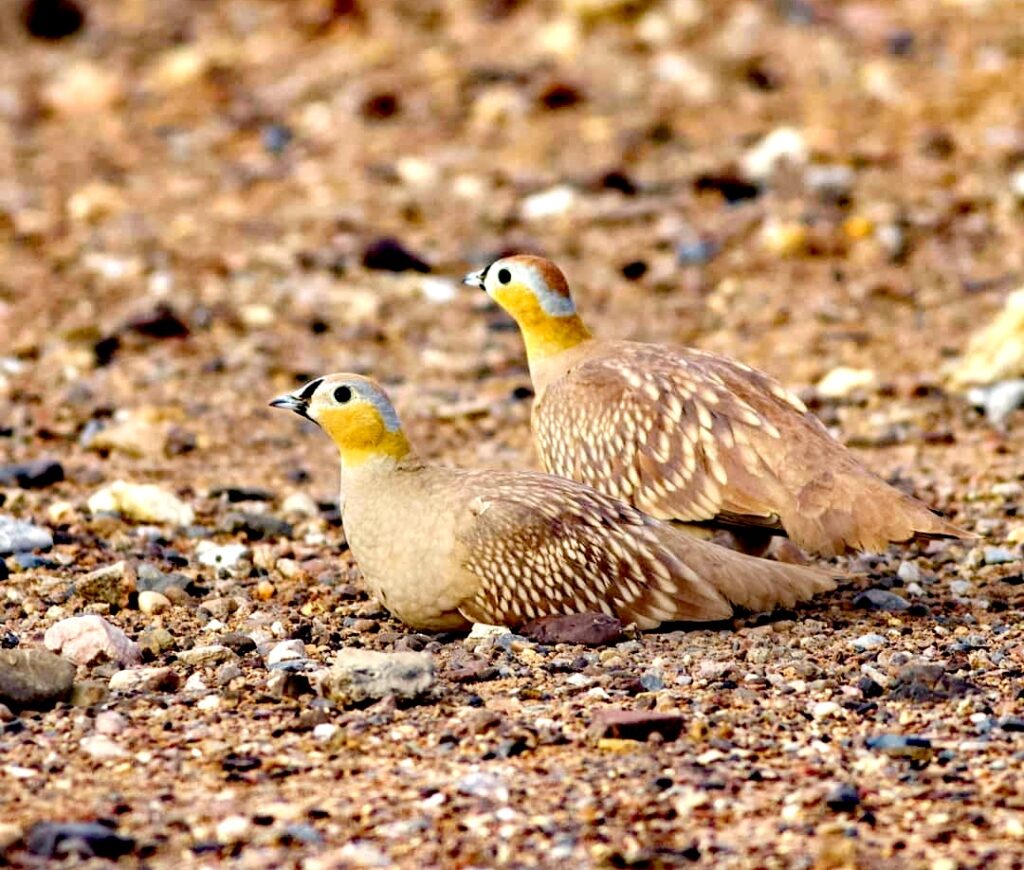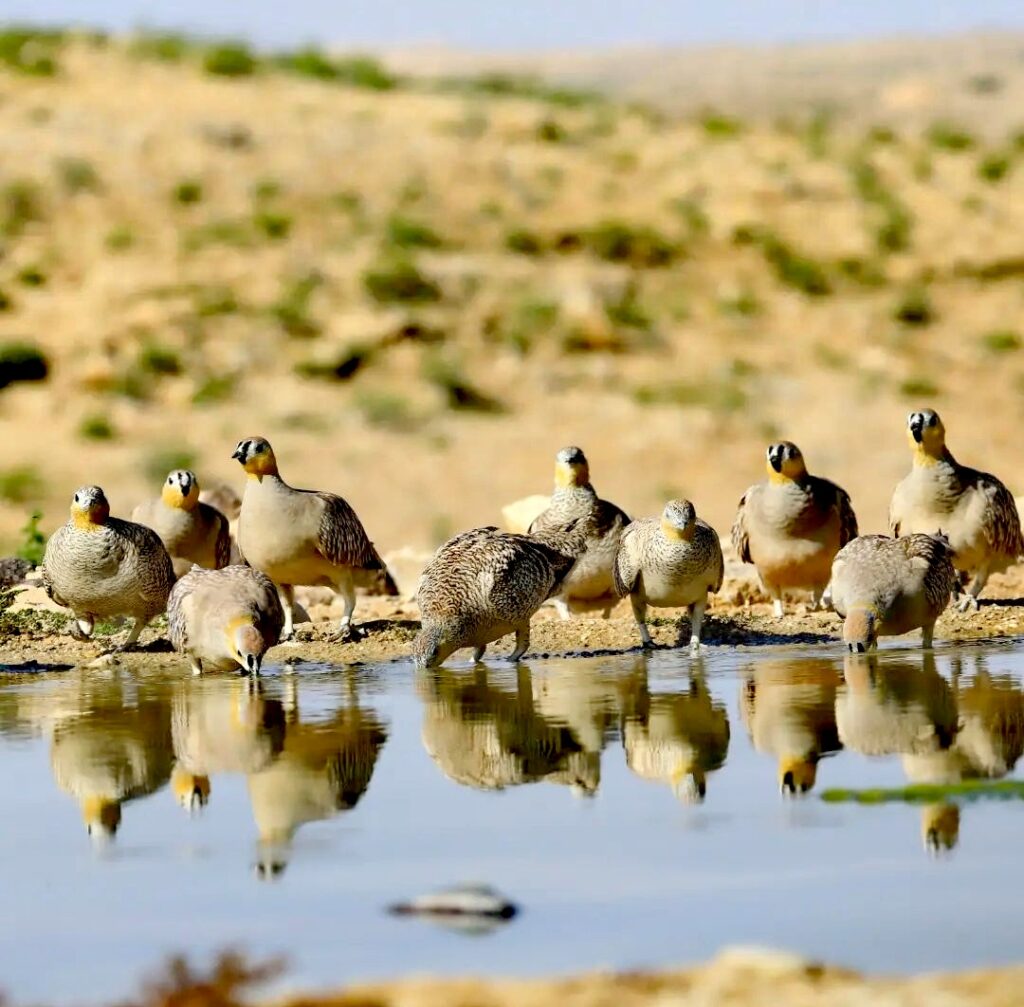CROWNED SANDGROUSE
Spotting a flock of Crowned Sandgrouse foraging on the desert floor or flying gracefully across the arid landscape is a memorable experience for birdwatchers exploring the rugged beauty of Morocco.
- Appearance: The Crowned Sandgrouse is a medium-sized bird with a plump body and relatively short legs. It has cryptic plumage with intricate patterns of mottled browns, grays, and whites, providing excellent camouflage against its arid habitat. One of its most distinctive features is the black crown on its head, which gives the bird its name. The male and female have similar plumage, but males typically have more vibrant colors and markings.
Habitat: In Morocco, the Crowned Sandgrouse inhabits a variety of arid and semi-arid habitats, including desert scrublands, rocky plateaus, and dry grasslands. It is often found in areas with sparse vegetation and open terrain, where it can forage for food and find suitable nesting sites.
Diet: Crowned Sandgrouse are primarily granivorous, feeding on a variety of seeds and grains found in their habitat. They forage on the ground, using their stout bills to pick up seeds and other food items. They may also consume small insects and other invertebrates, especially during the breeding season when protein-rich food is needed for nesting and raising young.
Behavior: Crowned Sandgrouse are typically seen foraging in small flocks, especially during the early morning and late afternoon when they are most active. They are well-adapted to their arid environment and can tolerate high temperatures and limited water sources. They may travel long distances in search of food and water, often visiting waterholes or other sources of moisture.
Breeding: Breeding typically occurs during the spring and summer months, with pairs establishing territories and building nests on the ground. The female lays a clutch of eggs, usually numbering between two to four, in a shallow scrape lined with plant material. Both parents share the responsibility of incubating the eggs and caring for the young.
Conservation: The Crowned Sandgrouse is not considered globally threatened, but like many bird species, it may face threats such as habitat loss and degradation due to human activities, including agriculture, urbanization, and infrastructure development. Conservation efforts focused on habitat protection and management are important for ensuring the continued presence of this charismatic bird in Morocco and beyond.



